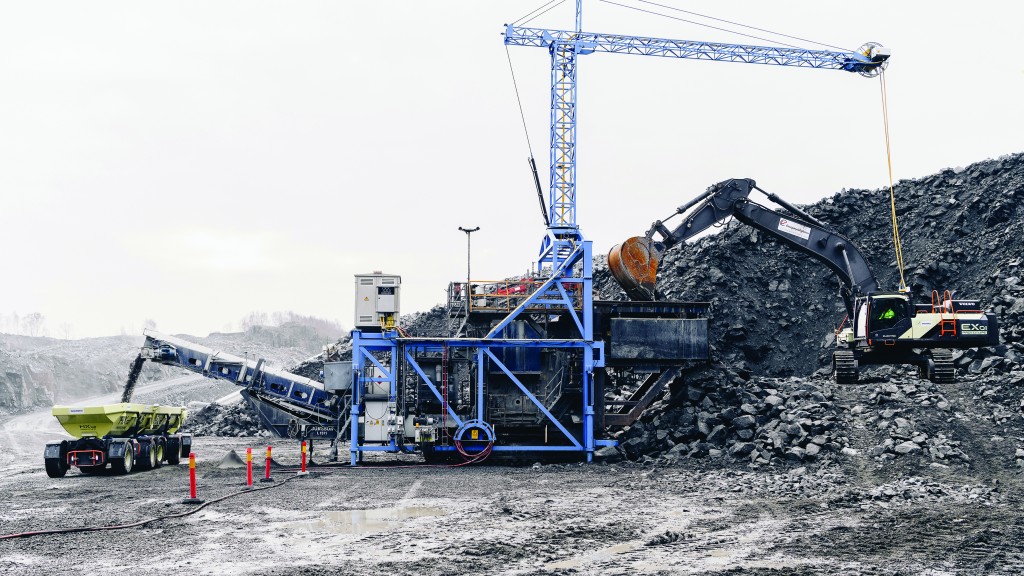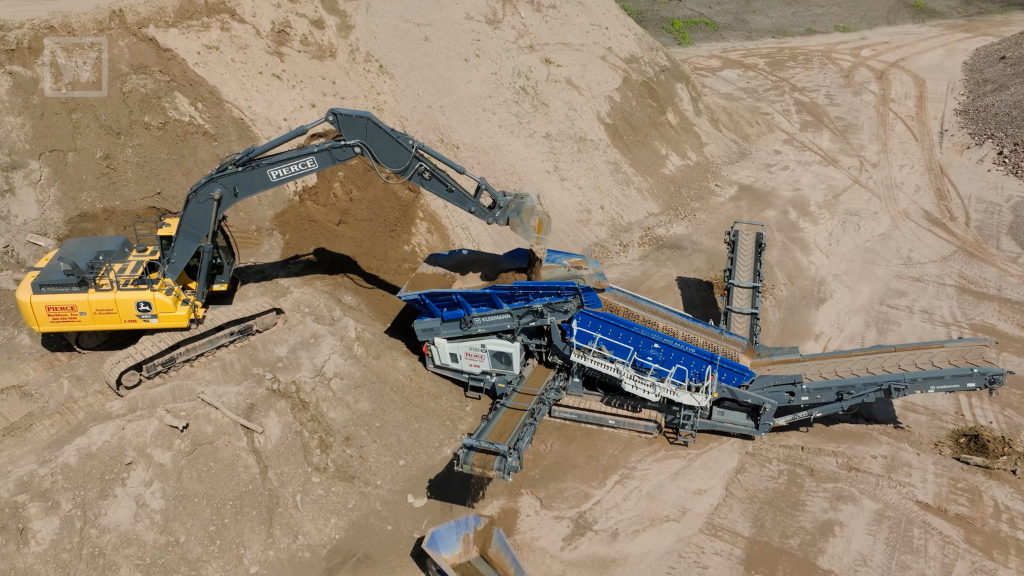Volvo CE demonstrates fully electric future for emission-free quarries
Electric Site test results point to the realistic goal of electrifying each transport stage in a quarry

Volvo Construction Equipment's Electric Site project aims to test the world's first "emission-free" quarry by electrifying each transport stage, from excavation to primary crushing, and transport to secondary crushing. It uses both electric and autonomous Volvo CE prototype machines, plus new machine and fleet control systems and an entirely integrated real-time site management system. Together, these form a complete Electric Site solution. Volvo CE and its customer Skanska tested the viability of the Electric Site research project for 10 weeks at a Skanska's Vikan Kross quarry near Gothenburg, Sweden. Heavy Equipment Guide staff were on site to see the operation and learn about the results.
Anders Danielsson, president and CEO of Skanska, said that they are working with Volvo CE to help them and their customers reduce their carbon footprint in quarries. "With climate change reshaping our industry, we need to find new, sustainable solutions and build partnerships with organizations that have different competencies," he explained.
The Electric Site project involves eight HX2 autonomous, battery-electric load carriers, intended to replace rigid dump trucks in a conventional quarry, which transport the material from the primary mobile crusher up to the secondary static crusher. When it came to energy use per ton, the HX2s proved that they could help Volvo CE take a big step toward achieving its future vision where work sites are ten times more efficient. The second-generation prototypes incorporate shared technologies and components from the entirety of the Volvo Group. They use a lithium-ion battery to power two electric motors which drive the machine; the hydraulics are driven by an additional electric motor. The HX2 is fitted with a vision system, which allows it to detect humans and obstacles in its vicinity. It can follow an adjustable, pre-programmed GPS path and is designed to ensure continuous loading.
The LX1 prototype electric hybrid wheel loader delivered more than a 50 percent improvement in fuel efficiency at the quarry, as well as significant reductions in emissions and noise pollution, compared to its conventional counterparts. Its job was to organize the piles of material at the site. The LX1 is a hybrid that incorporates a driveline that consists of electric-drive motors mounted at the wheels, electrically driven hydraulics, an energy storage system, a significantly smaller diesel engine and new machine architecture.
The EX1 70-ton, dual-powered, cable-connected excavator prototype loaded the electrified primary crusher at the quarry. The base machine for the EX1 is a Volvo EC750 crawler excavator that has been upgraded to incorporate a dual motor concept, with electric motor in addition to the diesel engine. The machine runs on electric power 95 percent of its operating time. At the quarry, the machine was plugged into the grid with crane-mounted cables attached to the machine with a swivel. If the cable is connected, the EX01 will automatically start in electric mode. If it's not, it will start in diesel mode. The EX1 is operated in exactly the same way as a conventional Volvo excavator but saves 44 percent of total energy cost when operated in electric mode.
Big reductions in carbon emissions and energy and operator costs
Uwe Müller, chief project manager for the Electric Site at Volvo CE, commented on the results of the 10 weeks of testing. "We've made incredible progress, learnt a lot and seen huge potential in the Electric Site solution's environmental, efficiency, safety and cost benefits," he said. "The results we have seen so far confirm that this research project is a step toward transforming the quarry and aggregates industry and creating emission-free quarries."
The groundbreaking results from Volvo CE's Electric Site research project were even better than expected. The tests showed a 98 percent reduction in carbon emissions, a 70 percent reduction in energy cost and a 40 percent reduction in operator cost. These results support the potential for a 25 percent reduction in total cost of operations, the company reported. They added that at this stage, the reduction in total cost of operations is just a prediction as the prototype machines are part of a research project and are not commercially available, making it impossible to give a guaranteed figure. That said, Volvo CE has a future vision where work sites are ten times more efficient, with zero accidents, zero unplanned stops and zero emissions. The invited guests included numerous Volvo CE customers, many of whom voiced their desire to move forward with this industry transformation now rather than later.
The results of the Electric Site project are a big step toward achieving this goal, the company noted. "At Volvo CE, we believe in a sustainable future and we are doing our best to build the world we want to live in," concludes Melker Jernberg, president of Volvo CE. "The Electric Site is one example of how we are trying to achieve this. With this research project we are combining intelligent machines, automation and electromobility to challenge traditional ways of working in the quarrying industry and explore new alternatives. We will now further mature the technologies involved and the reliability of the concept. Developing, testing and validating prototype machines with a customer at an early stage in the process speeds up development and ultimately brings more value to us and our customers."



